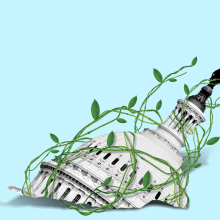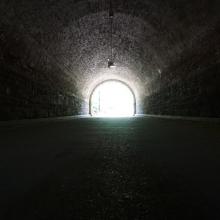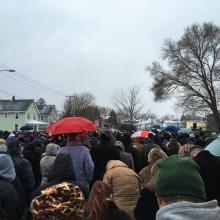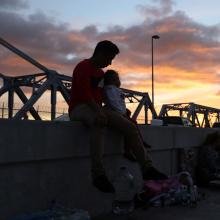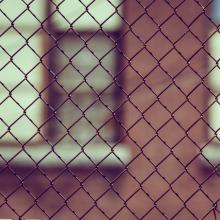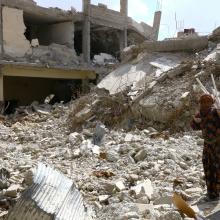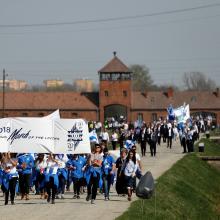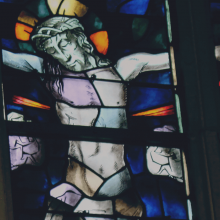trauma
Trauma changes your memories. When I think of traumatic experiences in my life — what happened, how I felt before that moment, how I felt afterward, the changes I’ve noticed in myself since — they often play in short bursts. Those bursts are rarely sequential, and the length of time they last depends on how long I allow myself to linger on a memory.
Filmmaker RaMell Ross’ Nickel Boys, an adaptation of Colson Whitehead’s 2019 Pulitzer Prize-winning novel, is a record of trauma. It tells the story of two Black boys’ experience at an abusive reform academy in Jim Crow-era Florida. The fictional Nickel Academy is inspired by an actual place, Florida’s Dozier School for Boys, where students received brutal treatment at the hands of staff. A 2012 investigation by the University of South Florida uncovered dozens of human burial sites on the property.
Ross does something unique with this story about trauma, memory, and how they relate to each other: He makes it feel authentic.
In January 2020, COVID-19 was first detected in United States. In the two years since, we’ve experienced death and mourning on a massive scale, lost relationships over politically driven misinformation about the deadly virus, and felt constant fear and anxiety as we try to protect ourselves and our loved ones. This trauma has shaken many to their spiritual core in ways that will leave lasting effects. As the omicron variant rips through communities, I’ve heard many people express feelings of resignation. Helplessness. Hopelessness. And given how trauma works, we shouldn't be surprised when notice ourselves experiencing these feelings, even in our churches.
FOR ME, FURY has a face. In 1999, I sat in a refugee camp with Kosovar families. They had been driven from their homes ahead of attacking Serb crowds aroused to violence by the cruel and charismatic oratory of then-president Slobodan Milosevic.
Thirty-year-old Hajrija thrust forward this question: “How can I live with this pain that our neighbors who we shared our bread with, who my husband shoveled snow from her walk even before he cleared our own ... asked aloud, in our yard while I was hanging my laundry, how she was going to kill me and my children? She was trying to decide between mortar or sniper. How can I go back and live with this person?” Hajrija was incandescent with fury.
On Jan. 6 this year, I saw the other side of Hajrija’s story—the spectacle of an attacking crowd. Several thousand gathered in front of the White House under the sway of another cruel and charismatic president. Like all such leaders, he deceived the crowd by saying their sacred rights had been stolen; that the enemy wants to “indoctrinate” their children; that if they did not act, the enemy would “illegally take over our country.” He loaded the crowd, aimed them at Congress—then gave the command.
I had worked with so many patients and families who had suffered trauma and crisis, especially families who had lost someone to senseless gun violence, but it appeared my training didn’t come into play for myself. I walked around my apartment, drinking coffee and smoking cigarettes, in agony. Then my chaplain hat popped up. I told myself, “Sharon, you know hours of waiting to hear news about someone usually means the patient is dead.” The reality of it all was shattering.
Two days after a brutal workplace shooting in the Chicago suburb of Aurora, where five were killed and six were injured, over 1,000 people joined together for a prayer vigil at the Henry Pratt Company plant, filling the street near the building where the shooting occurred. As several local pastors shared prayers with the huge gathering of mourners, the only sounds that broke the silence between prayers were quiet sobs. Beside a gate connected to the plant, people placed flowers, candles, and signs.
This year saw many of the president’s immigration-related campaign threats come to fruition. That came to a head in the late spring and early summer of 2018 as the administration implemented a policy of separating children from their parents at the border as they arrived to claim asylum. But, as Sojourners notes here, this crisis point was just one of many ongoing eruptions at our Southern border.
Amid such horrors in immigration policy, churches throughout the country stepped up in a resurgence of the 1980s-era Sanctuary Movement. In addition to accompanying immigrants to Immigration and Customs Enforcement appointments, training for interaction with ICE agents, and other active support measures, many churches — and synagogues and other houses of worship — are opening their sanctuaries to house people at risk of deportation.
It is an ethical imperative to consider the circumstances under which traumatic memories are recalled, whether in the course of therapy, during police investigations, court hearings, or public testimonies. Recalling trauma may be a part of the healing process or may lead to re-traumatization, persistence, and continued detrimental effects from traumatic memories.
My years of healing have taught me that childhood sexual abuse creates terrible trauma that is stored in our bodies, hiding in the nooks and crannies of a life struggling to be “normal” and free of pain. I learned those truths because I was a victim of sexual abuse in what I believed to be a safe place, my faith community.
The current outrage around families being detained and separated is important, but we must bear in mind that it aligns with a national history. Our Native siblings had their land taken from them, their families wiped out so the U.S. could be “founded.” My own ancestors had their children ripped away from them during slavery sales. Our Japanese siblings were placed in armed internment camps during the second World War — a history that this nation has often tried to avoid as much as possible. Last year, we saw an attempt to block immigrants and refugees from primarily Muslim nations, commonly known as the “Muslim Ban.”
Pennsylvania was the first state to institute the practice of confining prisoners alone in single cells. It started when a jail in Philadelphia became Eastern State Penitentiary, the country’s first state prison, in 1790. That was one year before the Eighth Amendment prohibited cruel and unusual punishment, and 223 years before the DOJ found the state’s use of solitary violated that amendment.
Our findings are alarming: 1-in-3 men and women screen positive for PTSD (similar to the lifetime prevalence in Vietnam War veterans), nearly half show a high level of depression, and half exhibit high anxiety. Half of children show high anxiety. Nearly 80 percent separation anxiety in children restricts their ability to go to school and explore their new world. The number one concern expressed by teachers is their difficulty attending school because of high separation anxiety. This is especially critical because cumulative research shows serious negative effects of untreated childhood trauma on mental and physical health in adulthood.
“Being here made me realize how important my Judaism is. I’m a link in a long chain that the Holocaust tried to break. People my age are the future.”
April 12 marks Holocaust Remembrance Day. Each year communities and schools plan various events such as reading the names of Holocaust victims and survivors, forums of Holocaust survivor speakers, or panel discussions with historians. These events run through an entire week of remembrance.
A recent tweet sent out by Dr. John Piper’s Desiring God ministries team sure sounded like an attack upon counseling and psychology.
On Feb. 6, Desiring God tweeted, “ We will find mental health when we stop staring at the mirror and fix our eyes on the strength and beauty of God.”
O God,
this morning when we woke to your presence in and around us,
we also woke to a heavy world,
and in this world, we can’t make sense of all the things
that are wrong and should be made right.
Submissive obedience is deeply embedded in Christian theology. The origin of sin is attributed to Adam and Eve’s disobedience in the garden. Jesus, by contrast, is described as “obedient unto death” — an example we are taught to emulate. God is depicted as all-powerful, all-knowing, a king and lord and father with relentless control over all things. And we — broken, limited, and prone to mistakes — are meant to trust God in all things, and give ourselves over completely to God’s divine power. This call to submissive obedience is exemplified, more clearly than anywhere else, in Jesus’ willing submission to torture and death on the cross.
Good Friday is an invitation for us, every year, to ask: What is actually good about Jesus’ death on the cross? What about it is salvific, and what is it saving us from?
When we come across bullies and predators in our world, we can respond with revulsion, or with silence. Bullies and predators want to have cheerleaders around them, encouraging their awful words and deeds. If we won’t applaud them, bullies and predators want us to at least abstain from criticizing them.
That’s why we’ve seen such a pushback against so-called “political correctness” by hate groups.
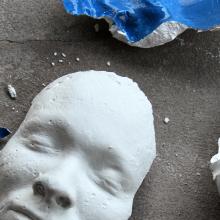
Image via Polryaz/Shutterstock.com
When we center healing, we remember that our struggles for social justice are not just about opposing things we do not like, but building the world we would actually like to live in. So many people do not join the hard work of organizing because they see only what they might lose and not what they would gain in world without oppression. That’s why the process is as important as our goal of social justice. Instead of waiting for the infinitely deferred “revolution,” we can start living the revolution now so people can have a taste of what a better world can be.

Image via CHEN WS/Shutterstock.com
Sept. 11 left the country in shock, raw, reeling, and devastated from the scale of terror and the overwhelming loss of life. The 15-year anniversary of Sept. 11 provided occasion for mourning, weeping, and sitting with the grieved. But on Sept. 12, many took to Twitter to express the catastrophic effects of the U.S. acting out of its trauma and grief for the past 15 years.
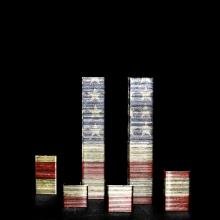
Image via Simone Fortuna/Shutterstock.com
Of course, those places were disappearing even when I lived there — that’s part of the charm of New York City, things come and go. In the city that’s very name has been changed to stay current, old things are constantly made new.
But it never became less jarring to note the Twin Towers’ absence on the horizon.


